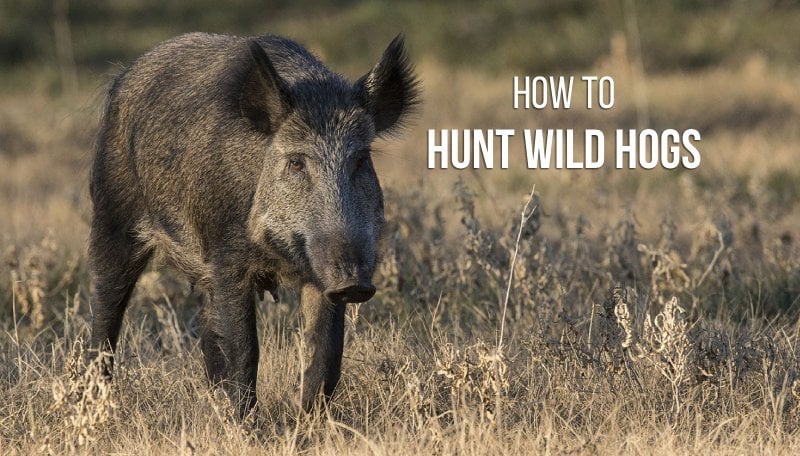
Last Updated on
Ever felt the adrenaline rush of a wild boar chase? Or the triumphant thrill when you’ve finally outsmarted one of nature’s most challenging beasts? If not, prepare yourself because we’re about to dive deep into the world of hog hunting. In this beginner’s guide, we’ll explore everything from understanding our tusky friends, gearing up for the hunt, and mastering hog-hunting techniques. Let’s get started!
Table of Contents
Understanding Feral Hogs
Preparation for Boar Hunting
Boar Hunting Techniques
– Spot-and-Stalk Hog Hunting
– Stand Hog Hunting
– Using Dogs for Boar Hunting
– Night Hog Hunting
– Helicopter Hog Hunting in Texas
Final Words
Understanding Feral Hogs
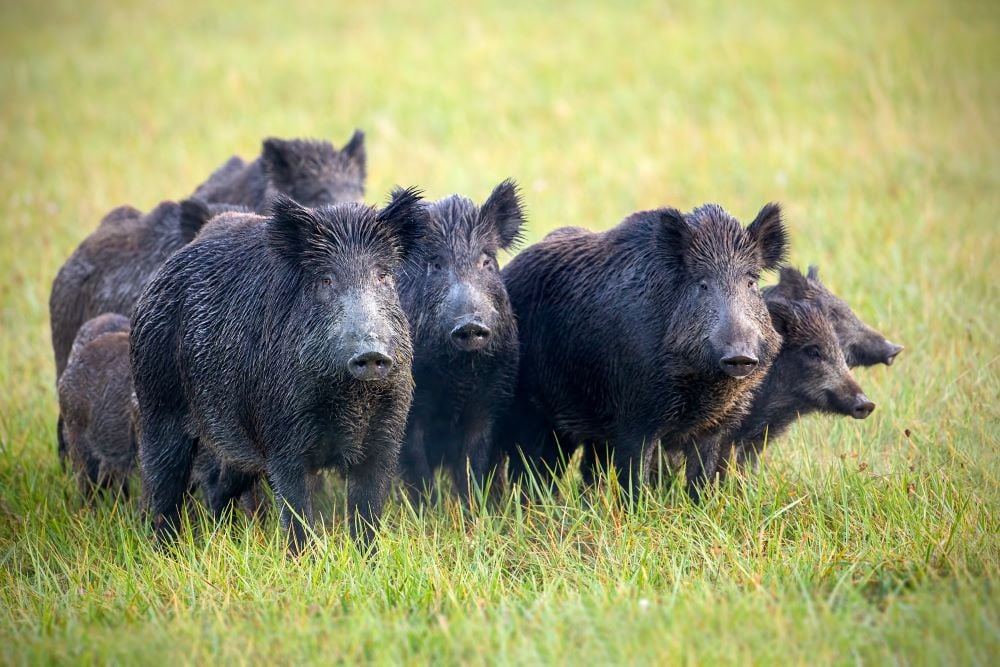
Alright, so before we jump into the nitty-gritty of boar hunting, let’s take a moment to understand our quarry – the wild hog.
Wild hogs are not your average farm pigs – they’re tough, intelligent, and incredibly adaptable creatures. They have an excellent sense of smell, which they use to find food, avoid danger, and even detect the presence of hunters like us.
In terms of habitat, these guys are pretty versatile. They can be found in forests, grasslands, swamps, and agricultural areas. And they’re not just good at adapting to different environments. They’re also great at altering their daily patterns to avoid humans. Some boars are active during the day, others at night, and some switch between the two.
Now, here’s something interesting. Wild boars are social animals, living in groups called sounders made up of females (sows) and their young. These groups can range in size but often consist of around 6-30 members. Sounders are led by the oldest and most experienced sow, and they tend to stick together, feeding, resting, and sleeping as a group. This social structure can make them more challenging to approach, as there are more eyes, ears, and noses to detect danger.
Male boars, on the other hand, prefer a more solitary lifestyle, especially as they get older. They are generally less cautious than sounders, but don’t let that fool you. These solitary boars are often larger, stronger, and more aggressive, especially during the mating season when they may compete with other males.
One key difference is that while sounders tend to stay within a certain home range, solitary boars can cover vast distances in search of food or mates, which can make them harder to locate.
So, whether you’re tracking a sounder or a solitary boar, it’s important to adjust your strategies accordingly.
Preparation for Boar Hunting
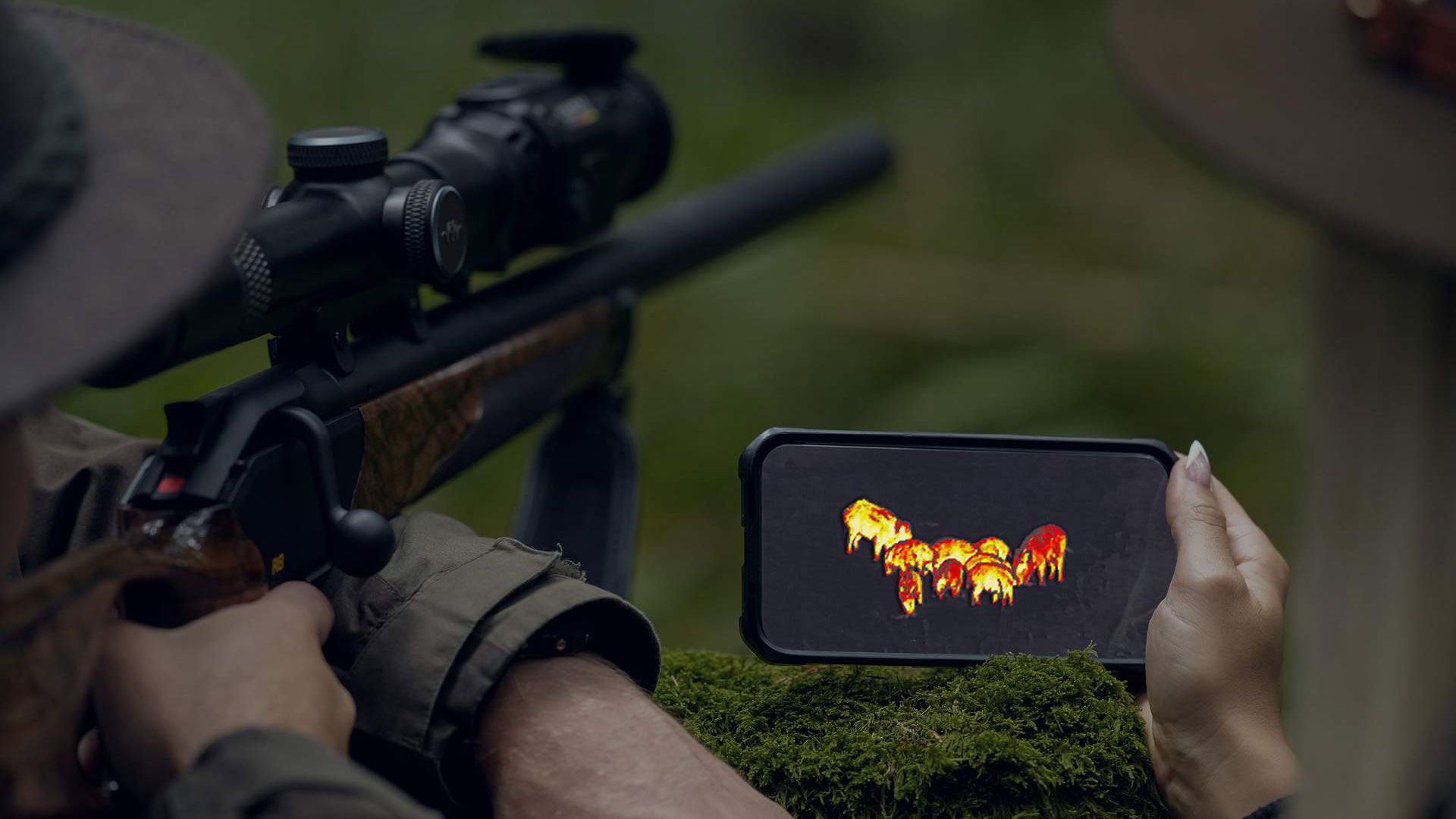
So now it’s time to get into the real meat and potatoes of boar hunting – the preparation. We’re sure you’re eager to get out there and start tracking, but trust us, proper preparation can make or break your hunting experience.
It’s not uncommon for seasoned hunters to take down several hogs before the group understands what’s going on and scatters. To do that, you need a rifle in a proper caliber, a suppressor, and good marksman skills for those headshots.
Headshots are almost required when hunting bigger hogs. The reason is the hog anatomy. On the exterior, long, wiry hair and dried mud soak up any blood that might otherwise leave a trail. The lungs of a pig are compact and located almost entirely between the shoulders, meaning that a shot aimed behind the crease, which would be effective on a deer, is likely to result in a gut shot on a hog. Big boars have a gristle shield covering their shoulders that soaks up even more impact, reducing the chances of a quick kill.
The habitat doesn’t make things any easier. A hog disappearing into the thick cover or dense forests can be like finding a needle in a haystack, especially when there’s little to no sign left behind.
All that means you need a higher-caliber rifle, such as one in the .308 Win, .300 Blackout, or .30-06. We don’t recommend using anything smaller than .243. A classic AR-15 or a bolt-action .223 rifle is alright for small hogs, but it’s unlikely to take down a bigger individual. With a .223, even a headshot on a big boar may not result in a clean kill. As for the .300 Blackout, in particular, its beauty lies in its quietness. With a suppressor, you can often keep shooting until the first hog squeals without spooking the rest of the group.
If you’re more into bowhunting, you’ll need a compound bow and broadheads that penetrate reliably. Though your range is limited with a bow, you benefit from quietness.
But a good rifle is only part of the equation. Let’s not forget about optics. A solid riflescope 3-9×40 is ideal in terms of magnification and field of view. And if you’re planning on hunting at night (which we’ll dive into later), a night vision or thermal imaging device is a must.
Your hunting camo should ideally be made of a quiet fabric that won’t rustle and give away your position as you move. Also, consider investing in clothing with scent-control technology.
Lastly, do your homework and learn about the area you’ll be hunting in. Understand the terrain, the vegetation, and the local wildlife. This knowledge can give you an edge when tracking and stalking boars.
Boar Hunting Techniques
Spot-and-Stalk Hog Hunting
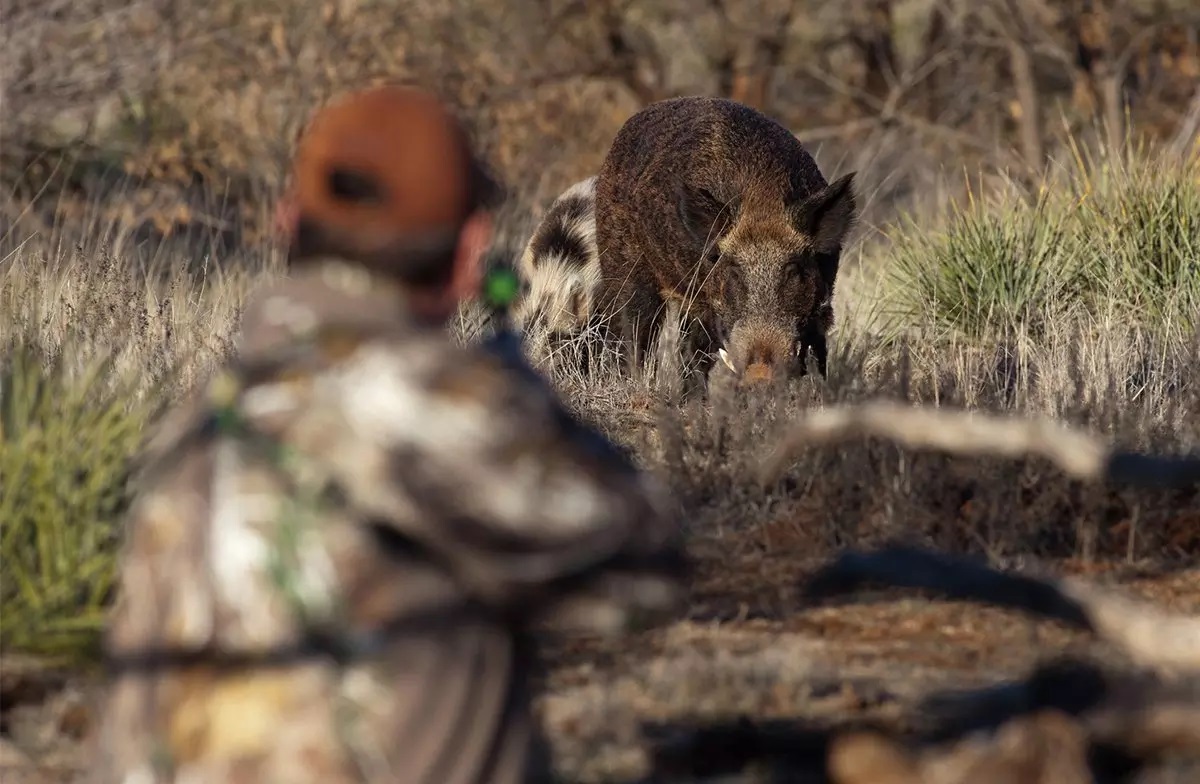
One of the most exciting and active hunting methods is the spot-and-stalking technique. Leveraging the hog’s weak eyesight, this technique involves spotting the animal from a distance and stealthily moving into a shooting position. Remember, wild hogs have an excellent sense of smell, so always approach from downwind.
Patience is key here. Hasty movements can spook the hog and send it running. So take your time, move quietly, and use the natural terrain for cover.
To locate a boar or a group, scout open agricultural lands or ranch areas late in the evening or check water sources early in the day. Keep an eye out for hog signs – rooting, wallowing areas, tracks, etc.
Stand Hog Hunting
On the flip side, if you prefer a stationary approach, stand hunting might be your style. This technique involves setting up a stand in a strategic location and waiting for the hogs to come to you. In many regions, using corn from timed feeders near water sources to draw wild hogs into the open is a common and effective practice.
If baiting isn’t allowed in your hunting area, look for water, mud, and thickets. Hogs wallow in mud to keep cool and fend off insects, as they don’t have sweat glands. The hotter the weather, the more likely you’ll find them at their active wallows. To identify an active wallow, give one a sniff test – since hogs urinate and defecate in their wallows, it’ll be obvious if you’ve found an active one. Also, look for areas with rubbing spoor.
Using Dogs for Boar Hunting
Hunting hogs with dogs isn’t just a productive method, it’s also steeped in tradition, particularly in the Deep South. This technique can be thrilling, but it requires well-trained hunting dogs and hunters who understand both the risks and rewards of this approach.
Typically, there are two types of dogs used in hog hunting:
Bay Dogs: These are often curs or hounds trained to scent pigs from cover. They bark on the track and keep the hog at bay until the hunter can move in for a clean shot.
Catch Dogs: This method is more common and involves using a powerful dog to rush and grab the hog with its jaws. Once the hog is immobilized, the hunter moves in to dispatch the animal with a knife. While this may sound intense, and indeed it’s not for everyone, it’s important to note that this method can actually be safer for both the dogs and hunters than firing bullets or arrows at a cornered and potentially aggressive hog. A frenzied hog can pose a significant threat, and using a catch dog allows for a controlled and direct approach to dispatching the animal.
Night Hog Hunting
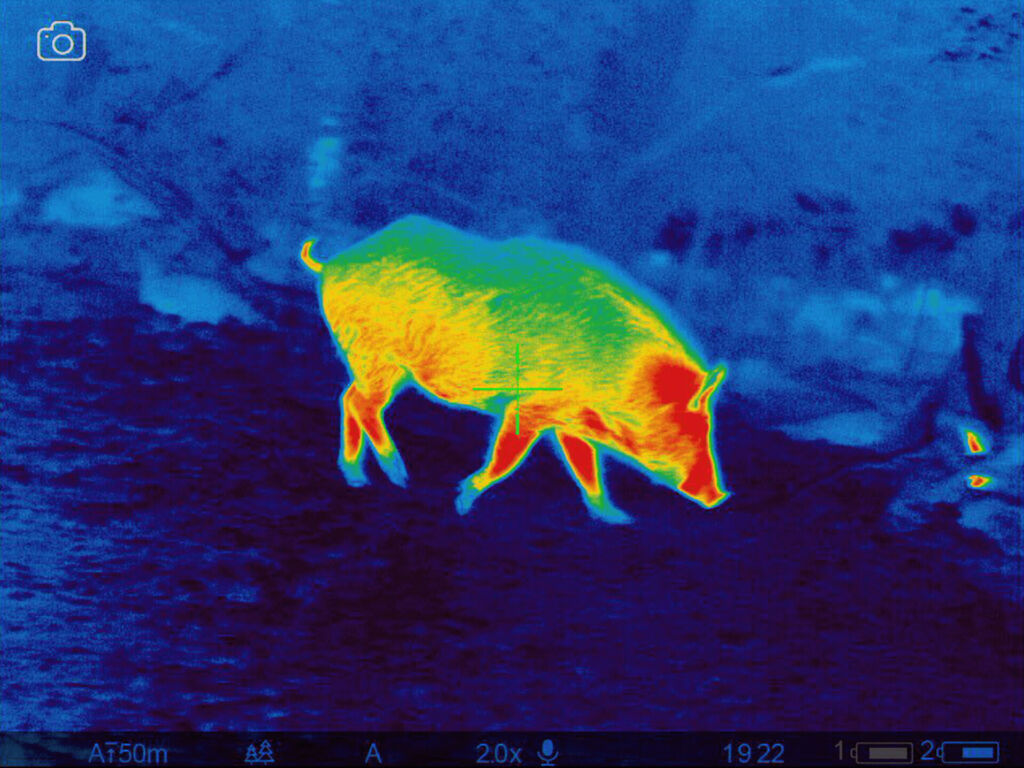
When the weather gets hot or hunting pressure increases, hogs often switch to a nocturnal routine. It’s when night hog hunting comes into its own.
A combination of night vision and a thermal scope usually works best, as while night vision can offer better detail, thermal scopes are superior in detecting hogs in dense foliage due to their heat signatures.
Pre-hunt scouting of your chosen hunting ground during daylight is invaluable when preparing for a night hog hunt. Familiarize yourself with prominent landmarks like large rocks, tree stumps, and bushes. Remember, these objects can retain heat and will appear as glowing masses through your thermal scope after sunset. It can lead to confusion, as it’s easy to mistake a warm rock pile for hogs. Also, measure distances across fields or to specific landmarks during your daytime scouting.
Helicopter Hog Hunting in Texas
Helicopter hog hunting – this method is as thrilling as it sounds. Picture this: you’re soaring over vast landscapes, scanning the ground below for signs of hogs, all while handling a high-powered rifle. It’s not your everyday hunting experience, that’s for sure!
Helicopter hog hunting has become particularly popular in states like Texas, where hog populations are high, and the damage they cause to crops and property is a serious issue. This method allows hunters to cover large areas quickly and efficiently, making it an effective way to control hog numbers.
But it’s not just a matter of hopping on a chopper and taking off. Safety is paramount, and it requires coordination and skill. Not to mention, you’ll need a strong stomach for those aerial maneuvers!
Final Words
Regardless of the technique you choose, remember that each one demands a unique set of skills, thorough preparation, and an understanding of hog behavior. Don’t be daunted, though. With time, patience, and respect for these magnificent creatures, you’ll find yourself growing as a hunter with each expedition. Happy hunting, beginners!
FAQ
What are some beginner-friendly boar hunting techniques?
Spot-and-stalk and stand hunting are two beginner-friendly techniques. Both methods require patience, observation skills, and understanding of boar behavior.
Can dogs be used for boar hunting?
Yes, using dogs for boar hunting is a traditional method in the Deep South.
Is it safe to hunt boars at night?
Yes, with proper preparation and equipment, it’s safe to hunt boars at night. However, it’s important to scout the area during the day and understand how to use thermal scopes or night vision equipment.
What is helicopter hog hunting?
Helicopter hog hunting involves hunting hogs from a helicopter. It’s a popular method in states like Texas for controlling large hog populations.




Leave a Reply